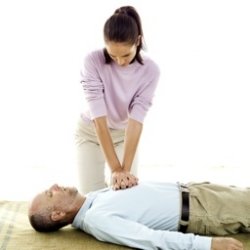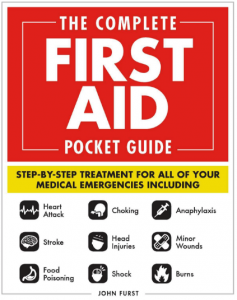Free CPR revision notes
Here’s a set of notes written about Cardio-Pulmonary Resuscitation (CPR). Feel free to test your knowledge of CPR after reading these notes by using one of our free CPR practice tests.
Cardiopulmonary resuscitation (CPR) is an emergency procedure used throughout the world in cases where the patients’ heart stops beating. Even though it has a complex protocol that follows very strict rules, CPR can be performed by literally anyone, whether trained or untrained in first aid.
Before we get into detailing the basic manoeuvres applied in CPR, you should remember that your safety is the first and most important step. Before approaching the victim, you should always remember to check for any immediate dangers that have the potential of turning you from savior to victim.
After checking for dangers, approach the victim and see if he or she is unconscious. If the victim is not responding to any stimuli, call the emergency number in your country immediately. You should always start CPR after you’ve evaluated the area for dangers and called an emergency team.
Whenever you find yourself in a situation where CPR could be needed just remember that there are only two basic actions: chest compressions and artificial respirations. If you were to choose one of these for different reasons, always choose to perform chest compressions, because offering mechanical support for brain circulation is more effective than providing oxygen without compressions.
In order to correctly perform chest compressions, first you need to position the victim on his or her back, making sure that there’s a hard surface underneath. Next, position yourself on any side of the victim, next to the person’s chest. Place one hand firmly on the center of the victim’s chest and place your other hand on top of the first hand.
In order to perform correct compressions, you need to use the full weight of your upper body, not just the arms. Push straight down on the victim’s chest, without bending your elbows, and try to compress the chest at least 5 cm. The compression rate should be 100 – 120 per minute (roughly 1.5 – 2 compressions a second).
Artificial respirations refer to mouth-to-mouth or mouth-to-nostrils breaths. While most people wouldn’t perform artificial respirations to strangers, it’s still a manoeuvre that you need to know. For mouth-to-mouth respirations, pinch the victim’s nostrils, tilt his head backwards and breathe twice into his mouth. Each of your expirations should last for 1 second.
If you want to do the complete set of actions, repeat these manoeuvres as follows: 30 compressions, followed by 2 artificial respirations. Once every two minutes check the victim for pulse, and repeat the manoeuvres until medical responders arrive to the scene.
If you don’t want to perform artificial respirations, continue with 100 – 120/minute chest compressions and check the victim every two minutes for pulse until medical responders arrive.







hi
this was helpful for my exam